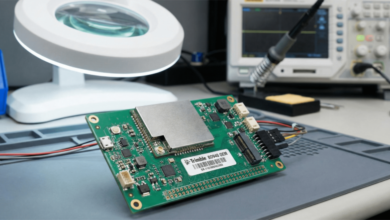
Seng Tiong Ho has made significant contributions to the advancement of silicon photonics, a field that is revolutionizing the way data is transmitted, processed, and stored. As the demand for faster, more efficient communication networks grows, silicon photonics is playing a critical role in shaping the next generation of high-speed data transmission. From 5G networks to advanced data centers and ultra-fast internet connections, this technology is poised to transform the digital landscape.
The Evolution of Silicon Photonics with Seng Tiong Ho Silicon
Silicon photonics has emerged as a game-changer in the world of telecommunications and computing, offering significant advantages over traditional electronic components. By integrating optical components onto silicon chips, researchers and engineers have unlocked new possibilities for speed, efficiency, and scalability. Seng Tiong Ho has contributed to the understanding and advancement of this technology, helping to push the boundaries of optical communication.
For decades, electronic circuits have been the backbone of data transmission, but their limitations have become increasingly apparent as the demand for higher bandwidth and lower latency grows. Silicon photonics overcomes these limitations by using light instead of electrical signals to transfer data. Light can travel faster and with less resistance than electrical currents, reducing power consumption and improving performance in data-heavy applications.
Silicon Photonics and the Rise of 5G
One of the most exciting applications of silicon photonics is its impact on 5G networks. As telecommunication providers work to expand their 5G infrastructure, they require components that can handle enormous amounts of data with minimal delay. Seng Tiong Ho has explored how silicon photonics can optimize these networks, enabling faster transmission speeds, lower latency, and greater energy efficiency.
Traditional 5G infrastructure relies on complex electronic circuits that generate heat and consume significant power. By replacing certain components with silicon photonics-based solutions, network providers can reduce power usage and improve the overall performance of 5G networks. This shift is crucial as the world moves toward smart cities, autonomous vehicles, and connected devices that demand real-time data processing.
Transforming Data Centers with Optical Connectivity with Seng Tiong Ho Silicon
Data centers are the backbone of the internet, supporting everything from cloud computing to video streaming. With the exponential growth of digital content, data centers are under pressure to improve speed and efficiency. Silicon photonics is rapidly becoming the key to addressing these challenges, allowing data centers to handle higher traffic loads without sacrificing performance.
Seng Tiong Ho has examined how photonics-based solutions can enhance data center operations by enabling optical interconnects. Unlike traditional copper-based interconnects, which are limited in speed and prone to energy loss, silicon photonics enables data to be transmitted over longer distances with minimal degradation. This means faster response times, lower power consumption, and an overall more efficient system.
Additionally, as artificial intelligence and machine learning applications continue to evolve, data centers require ever-increasing computational power. Silicon photonics offers a scalable and cost-effective solution, allowing AI-driven systems to process vast amounts of information in real time without the bottlenecks associated with traditional electronics.
The Impact on Next-Generation Internet Speeds with Seng Tiong Ho Silicon
The demand for ultra-fast internet is higher than ever, with consumers and businesses expecting seamless connectivity for everything from remote work to online gaming. Silicon photonics is playing a crucial role in making high-speed internet more accessible and reliable.
Seng Tiong Ho has contributed to the ongoing research into how optical networks powered by silicon photonics can deliver lightning-fast speeds without the limitations of copper or fiber optic cables. Unlike conventional fiber optics, silicon photonics can be integrated directly into existing semiconductor manufacturing processes, reducing costs and improving scalability.
This breakthrough is particularly important as countries around the world invest in upgrading their broadband infrastructure. By utilizing silicon photonics, service providers can deliver symmetrical gigabit speeds to households and businesses, ensuring smoother video streaming, faster downloads, and reduced latency for cloud applications.
The Future of Silicon Photonics
As silicon photonics continues to evolve, new applications and innovations are emerging across various industries. Beyond telecommunications and data centers, this technology is being explored for use in biomedical imaging, lidar systems for autonomous vehicles, and next-generation computing architectures.
Seng Tiong Ho has been a leading figure in driving these advancements, helping to bridge the gap between theoretical research and practical implementation. As researchers refine fabrication techniques and develop new materials, the cost of silicon photonics components is expected to decrease, making them more accessible for widespread adoption.
The potential of silicon photonics extends far beyond today’s communication networks. Future developments could lead to photonic processors capable of outperforming traditional silicon-based CPUs, paving the way for even more powerful computing systems. As the world moves toward an increasingly interconnected digital future, the role of silicon photonics will only continue to expand.
Seng Tiong Ho remains a key figure in this rapidly evolving field, shaping the technologies that will define the next generation of high-speed data transmission.



